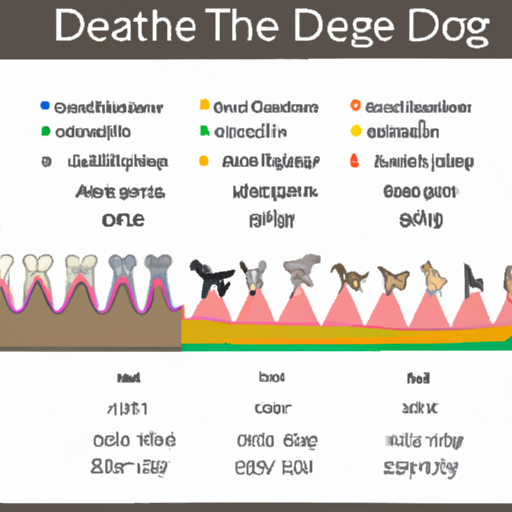Caring for our canine companions involves understanding them from nose to tail. One area that often poses a curiosity is how to tell a dog’s age by their teeth. This article delves into the fascinating world of canine dentition, from puppyhood to senior years. By the end, you’ll have the knowledge to estimate your furry friend’s age with a peek into their mouth.
Table of Contents
- Understanding Canine Dentition
- Puppy Teeth: The First Phase
- Adult Teeth: The Age Telling Phase
- Aging Beyond the Teeth
- Frequently Asked Questions
Key Takeaways
- Dogs’ teeth can provide a rough estimate of their age.
- Puppies have 28 deciduous teeth, while adult dogs have 42 permanent teeth.
- Adult teeth will start to show wear and tear as dogs age, indicating their relative age.
- Other factors can also influence the state of a dog’s teeth, such as diet, breed, and general health.
Understanding Canine Dentition
Like humans, dogs have two sets of teeth throughout their lives – deciduous (baby) teeth and permanent (adult) teeth. The state and condition of these teeth can provide clues about a dog’s age. However, it’s important to remember that many factors can affect a dog’s teeth, including diet, healthcare, and breed.
Here is a table showing the timeline of canine dentition:
| Age (Weeks) | Dental Development |
|---|---|
| 2-4 | Deciduous teeth start to appear |
| 8-12 | Deciduous teeth are fully grown |
| 12-16 | Deciduous teeth start to fall out |
| 16-28 | Permanent teeth are fully grown |
Puppy Teeth: The First Phase
Puppies are born toothless, but around 2-4 weeks of age, their 28 deciduous teeth start to appear. By the time they’re 8-12 weeks old, all deciduous teeth should have erupted. These teeth are small, sharp, and bright white. If you’re looking at a dog with a mouth full of these tiny teeth, you’re likely dealing with a puppy under three months old.
Adult Teeth: The First Age Telling Phase
Between 12 to 16 weeks, puppies begin to lose their baby teeth, making way for their 42 permanent adult teeth. These teeth are larger and less pointy, with the fully grown set usually in place by six to seven months.
As the dog ages, the teeth undergo natural wear and tear, changing in color, shape, and condition. This wear is the key to estimating a dog’s age. Here is a more detailed guide to the stages of a dog’s dental aging.
Around 1-2 years, the teeth might start to yellow. By 3-5 years, all the teeth may have tartar build-up, and some wear may be evident. When a dog reaches 5-10 years, the teeth may show more wear and signs of disease. Beyond 10 years, the teeth can be heavily worn, and dental disease may be prevalent.
Aging Beyond the Teeth
While teeth can be a good indicator, there are other ways to gauge a dog’s age. These can include an examination of the eyes, coat, and overall health. This article from OneTopDog provides an excellent overview of these additional methods.
Frequently Asked Questions
-
Can my vet accurately tell my dog’s age by their teeth? Your vet can provide a rough estimate of your dog’s age based on their dental condition. However, many factors can affect a dog’s teeth, so it may not always be 100% accurate.
-
Do all dogs lose their baby teeth? Yes, all dogs lose their baby teeth, just like humans. This usually occurs between 12 to 16 weeks of age.
-
What should I do if my dog has bad teeth? If you notice that your dog has bad teeth, it’s crucial to visit a vet. Dental disease can lead to more severe health problems if left untreated. Here are some tips on how to care for your dog’s teeth.
-
Do certain breeds have different teeth? Yes, some breed variations can affect teeth. For example, brachycephalic breeds (like Bulldogs and Pugs) often have crowded teeth due to their short snouts, which can affect dental health.
In conclusion, understanding the state of your dog’s teeth can be a helpful tool in estimating their age. It is, however, only one piece of the puzzle. Regular care, including dental checks and a healthy diet, can ensure that your dog’s teeth stay in the best condition possible, no matter their age. For more information about dog’s health, check out this link.



